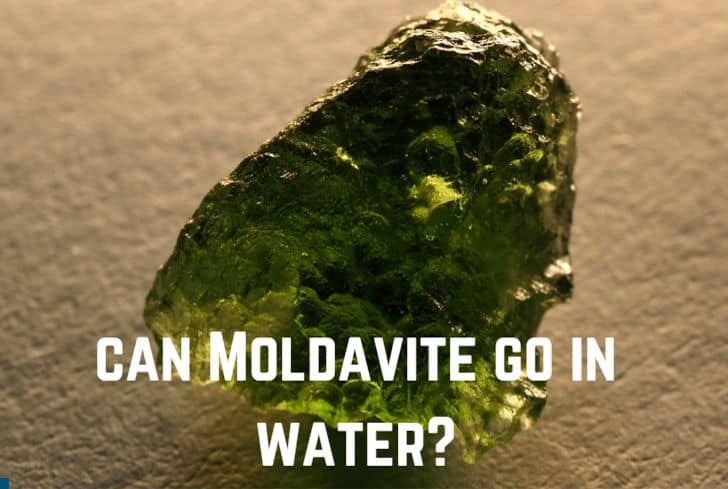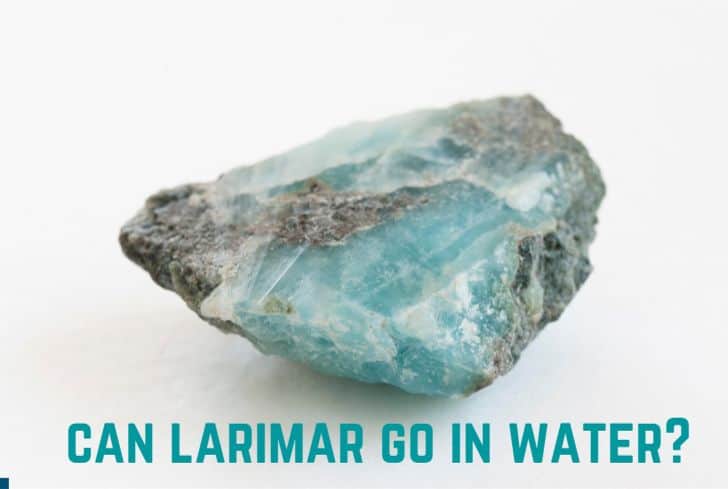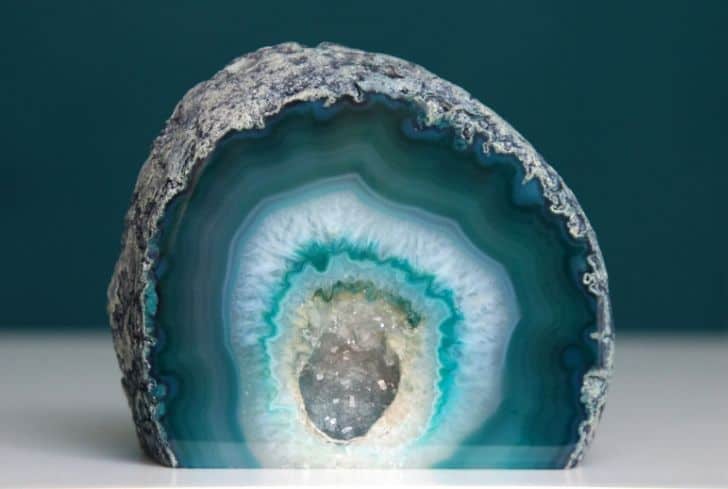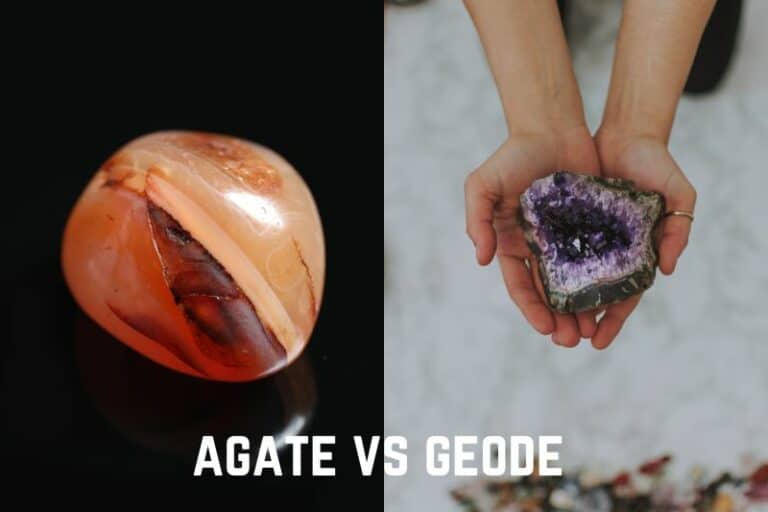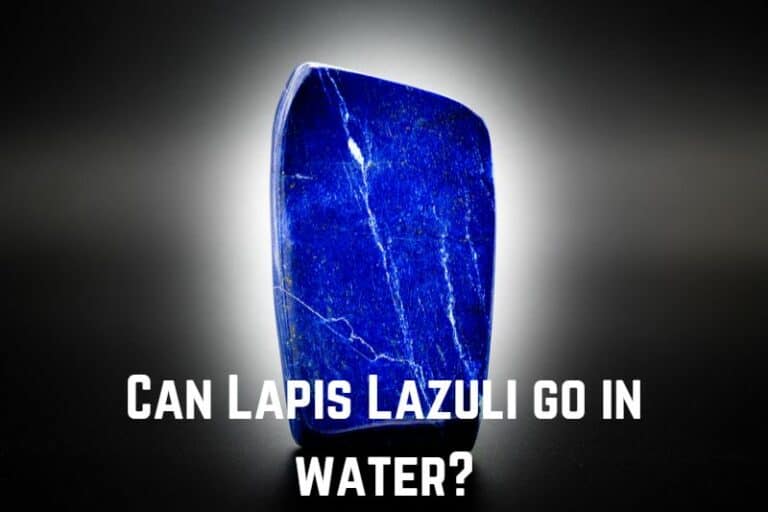Can Jade Go in the Water? (Answered)
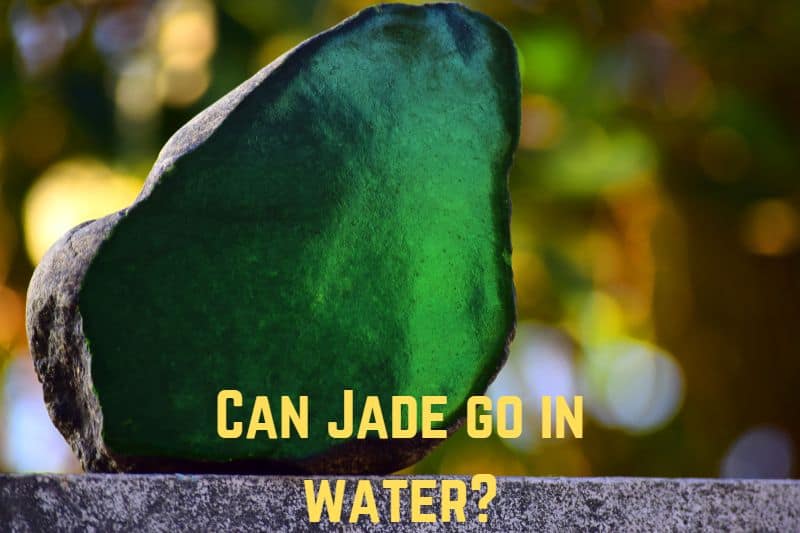
Jade is a gemstone that has been highly valued since historical times for its aesthetic, spiritual, and practical uses. It refers to two different silicate minerals: nephrite (a silicate of calcium and magnesium) and jadeite (a silicate of sodium and aluminum).
Have you ever wondered if Jade can go in the water? In this article, we are going to discuss just that. We will begin by talking about the stone’s interaction with water and salt water. Then we will discuss how to check its authenticity. Finally, we will look at its properties and uses.
Read: Can Fluorite Go in the Sun?
Is Jade Water Safe?
Yes, jade is safe in the water. It has a value of 6.0 to 7.0 on the Mohs Hardness Scale, which is above the minimum value required for minerals to be safe underwater. However, like all stones, they should not be immersed for long, as they can get damaged.
Mohs Hardness Scale is a relative measure of a mineral’s resistance to scratching. Besides that, it also indicates a stone’s relationship with water. Usually, a value over 5.0 implies that the stone is safe for immersion.
Softer stones like selenite (2.0 on Mohs Hardness Scale) should never be immersed. But even harder stones like jade are not safe in the water for too long. Water enters the crevices of stones, expanding their cracks. These fissures can slowly damage the structure of the stone, making it prone to cracking.
Water also tarnishes the appearance of stones. It strips off the polish from their surface, making them look duller. This is especially bad for jade since its smooth and vibrant surface is why it is so highly valued in jewelry and ornaments.
Therefore, while it is safe to immerse jade in water for a short period, it should not be left underwater for too long.
Can Jade Go in Salt Water?
No, jade should not be put into salt water. Jade has a value of 6.0 to 7.0 on the Mohs Hardness Scale meaning that it can survive underwater. However, even then, it should not be immersed for too long as water can be damaging. When we bring salt into the mix, it only worsens the corrosive process.
When dissolved in water, salt can seep into the crevices of the stone. Salt particles remain there even after the water evaporates, and they widen the cracks. These fissures can slowly damage the structure of the stone.
Salt water also tarnishes the appearance of the stone by stripping off the polish. Finally, salt can also react adversely with the elements of the mineral, and this is especially true for minerals having iron.
Saltwater hastens the process of rusting by making the metal lose its electrons more easily. Therefore, it is best not to immerse jade in salt water.
Does Jade Change Color in Water?
No, jade does not change color underwater. It is a hard stone with a value of 6.0 to 7.0 on the Mohs Hardness Scale, which is above the minimum value of 5.0 required for minerals to be safe underwater. Hence, it is not damaged by water.
Jade is composed of either jadeite or nephrite minerals. Both of these are typically resistant to chemical reactions, including those with water. Therefore, it is quite safe to put the stone underwater, and it is also the best way of cleaning it.
However, please note that, after immersion, the stone may have some water on its surface, which can change how light bounces/reflects off the surface. But this is only due to the water and the stone’s actual color will remain unchanged.

How to Cleanse Jade?
Jade has a value of 6.0 to 7.0 on the Mohs Hardness Scale, meaning that it can go underwater. So, we will clean it accordingly with a mix of water and soap. Follow these steps to clean jade:
- Mix a soft detergent/soap with lukewarm water.
- Immerse the stone in the solution for a few minutes and clean the crevices with a soft brush.
- Rinse it under running water to get rid of all soap.
- Let it air dry, ensuring that you twist it a few times to remove all remaining water.
For recharging purposes, you can leave the stone in the moonlight, put it in brown rice, or smudge it with sage.
How Can You Tell if Jade is Real?
Try these methods to test if your stone is real jade:
- Checking Surface: A real jade will have a smooth, bright surface; so make sure that your stone also has such a vibrant look. In most cases, your jade is not going to be purely opaque (these aren’t very valuable) or purely transparent. Instead, you should look for a combination of opaque and transparent, something like light reflecting off the water. If your stone looks dull/flat or seems to have air bubbles in it, it may be fake.
- Consistency of Color: Since stones are made from natural processes, they have some color variations throughout their surface. These variations will usually be consistent, and you will see the same pattern over the entire stone. However, if your stone has an inconsistent pattern or a too perfectly colored surface, then it may not be real. You should put it under light to examine it properly.
- Heaviness: Jade has a high density and is therefore quite heavy for its size. This can help you judge its authenticity: toss and catch the stone a few times to get a sense of its weight. If it’s too light, then it may be fake. Try to get hold of another stone, and it will give you a better idea. This test is not precise but it’s an easy and popular method.
- Temperature: Real stones are cool to the touch, and so is jade. Hold the stone against your face or neck, and you should feel its coldness. If it doesn’t feel cold then it might be fake. You can also try squeezing the stone with your hand and trying to heat it: a fake stone will get warmed up. Real jade, on the other hand, will still be cool to the touch.
- Scratch Test: Jade has a value of 6.0 to 7.0 on the Mohs Hardness Scale, meaning that it is a relatively hard mineral. So, you can do a simple scratch test to check its authenticity: scratch the stone’s surface with your fingernails or with a scissor. If it gets scratched, then it is fake. Real jade is hard and will not scratch so easily.
All these methods are quick and easy, but they may not be precise. For the most accurate results, you should take your stone to a jeweler, who can check its authenticity and also give you an estimate of its value.
Properties and Uses of Jade
Properties
- Appearance: Jade comes in almost all colors but is primarily green. The Nephrite variant also occurs in a creamy white form, which is known as “mutton fat” jade in China). The most-prized variety (both historically and in the present) is the translucent emerald-green jadeite. It is sometimes also known as “imperial jade”.
- Crystal Structure: Jade’s crystals occur as an intergrown grainy or fine fibrous aggregate. It has a splintery fracture and no cleavage. The crystals are usually translucent or opaque. Jade is also quite brittle, meaning that it can break easily. You can learn about the crystal’s origins and occurrence in this video by Gemstones.
- Composition: Jade refers to two different types of silicate minerals: nephrite and jadeite. This was first discovered by French mineralogist Alexis Damour in 1863. Nephrite is a silicate of calcium and magnesium in the amphibole group of minerals. On the other hand, jadeite is a silicate of sodium and aluminum in the pyroxene group.
- Hardness: Both the nephrite and jadeite variants are quite hard. Nephrite has a value of 6.0 to 6.5 on the Mohs Hardness Scale, while jadeite is slightly harder, having a value of about 6.0 to 7.0. However, despite its lower hardness, nephrite is tougher and more resistant to breakage.
Uses
- Jewellery & Ornaments: Since ancient times, jade has been used in jewelry and ornaments because of its beautiful colors and translucency. In ancient times, it was considered the “imperial gem”, and in China, the stone was valued as highly as gold and diamond.
- Ritualistic Use: In many cultures, jade has played a key role in cultural practices. In Mesoamerica, for example, it was highly prized in symbolic and ideological rituals. The stone was also quite rare in pre-Columbian Mesoamerican cultures, which added to its value.
- Spiritual Uses: Jade gets its name from the Spanish term piedra de ijada, meaning “loin stone”. This refers to the ancient belief that the stone could cure ailments of the loins and kidneys. So, since ancient times, the stone has been associated with spiritual beliefs; it is still valued today for bringing gentleness and harmony.
- Historical Uses: Besides the ones mentioned above, jade had many other uses. It was used for making tools (adzes, chisels, etc.) and weapons. Jade also helped to create decorative items, ceremonial objects, and even burial suits.
Read: Can Lapis Lazuli Go in Water?
Conclusion
In this article, we have discussed jade’s interaction with water. Since it has a value of 6.0 to 7.0 on the Mohs Hardness Scale, it is safe to go underwater. We also discussed how to ascertain the stone’s authenticity. Finally, we looked at its properties and uses.

